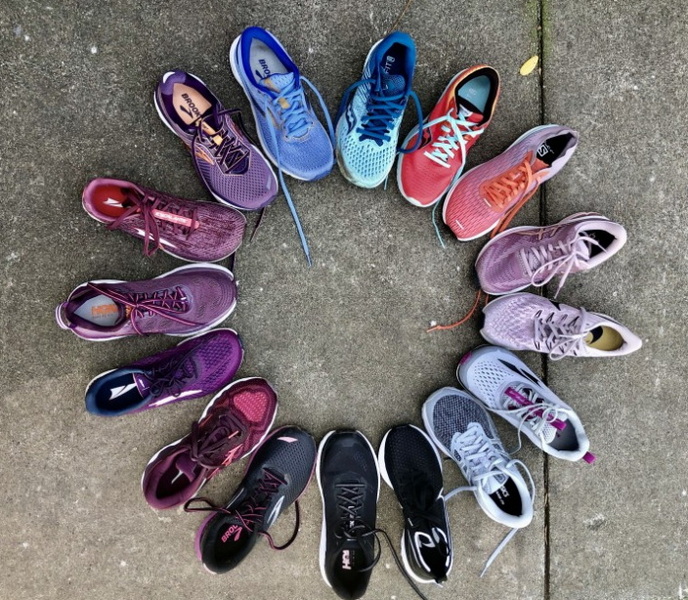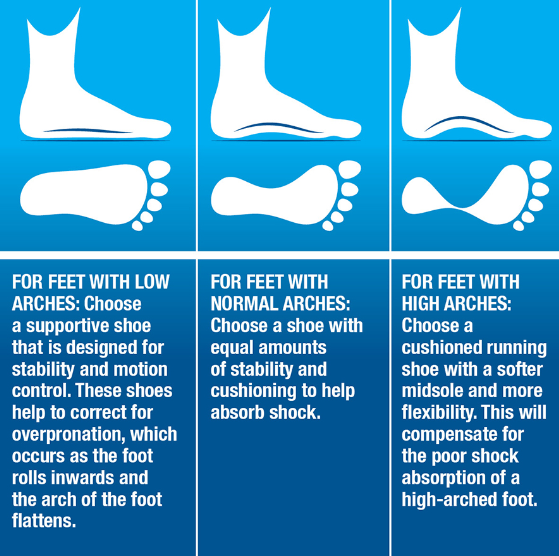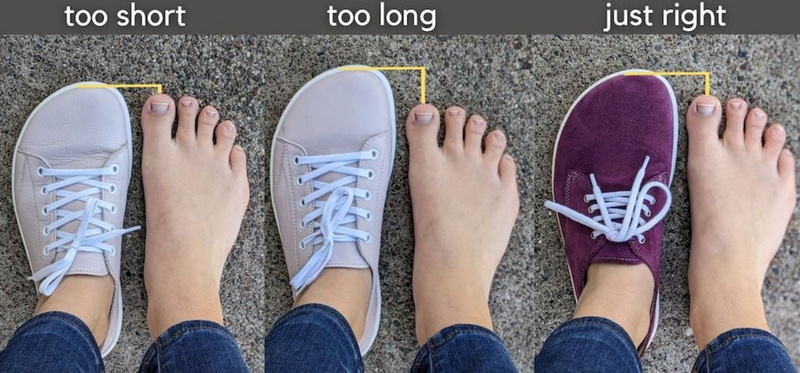Content Menu
● Understanding the Importance of Proper Running Shoes
● Key Factors to Consider When Choosing Running Shoes
>> 1. Foot Type and Pronation
>> 2. Running Surface
>> 3. Running Distance and Frequency
>> 4. Shoe Fit and Comfort
>> 5. Cushioning and Support
>> 6. Heel-to-Toe Drop
>> 7. Breathability and Materials
>> 8. Brand and Model Considerations
● The Importance of Women-Specific Running Shoes
● How to Shop for Running Shoes
● Breaking in Your New Running Shoes
● When to Replace Your Running Shoes
● The Role of Technology in Running Shoes
● Common Mistakes to Avoid When Choosing Running Shoes
● The Impact of Weight on Shoe Selection
● Seasonal Considerations for Running Shoes
● The Role of Socks in Running Shoe Comfort
● Customizing Your Running Shoes
● The Environmental Impact of Running Shoes
● Conclusion
● FAQ
>> 1. How often should I replace my running shoes?
>> 2. Are expensive running shoes always better?
>> 3. Should I buy running shoes a size larger?
>> 4. Can I use the same shoes for running and other activities?
>> 5. How do I know if I need stability shoes or neutral shoes?
Selecting the right running shoes is crucial for women who want to enjoy comfortable, injury-free runs and achieve their fitness goals. With countless options available in the market, finding the perfect pair can be overwhelming. This comprehensive guide will walk you through the essential factors to consider when choosing running shoes for women, helping you make an informed decision that suits your unique needs.

Understanding the Importance of Proper Running Shoes
Before diving into the selection process, it's vital to understand why choosing the right running shoes matters. Proper footwear can:
- Reduce the risk of injuries
- Enhance performance
- Improve comfort during runs
- Provide adequate support for your feet and legs
- Boost motivation to maintain a consistent running routine
Key Factors to Consider When Choosing Running Shoes
1. Foot Type and Pronation
One of the most critical aspects of selecting running shoes is understanding your foot type and pronation pattern. Pronation refers to the natural inward rolling motion of your foot as it strikes the ground.
There are three main types of pronation:
- Neutral pronation
- Overpronation
- Underpronation (supination)
To determine your pronation type, you can:
- Consult a professional at a specialty running store
- Perform a wet test at home
- Analyze the wear pattern on your current shoes
2. Running Surface
Consider where you'll be doing most of your running:
- Road running: Choose shoes designed for pavement with adequate cushioning and support.
- Trail running: Opt for shoes with enhanced traction and durability for uneven terrain.
- Track running: Look for lightweight shoes with minimal cushioning for speed work.
3. Running Distance and Frequency
Your running habits will influence the type of shoe you need:
- Long-distance runners: Prioritize cushioning and support for extended comfort.
- Short-distance runners: Focus on lightweight, responsive shoes for quicker movements.
- Occasional runners: Look for versatile shoes that can handle various activities.
4. Shoe Fit and Comfort
Proper fit is essential for comfort and injury prevention. Keep these tips in mind:
- Shop for shoes later in the day when your feet are slightly swollen.
- Wear the socks you typically run in when trying on shoes.
- Ensure there's about a thumb's width of space between your longest toe and the shoe's front.
- The heel should fit snugly without slipping.
- The shoe should feel comfortable immediately – don't rely on a "breaking-in" period.
5. Cushioning and Support
Different runners require varying levels of cushioning and support:
- Maximum cushioning: Ideal for long-distance runners or those seeking extra comfort.
- Moderate cushioning: Suitable for most runners, offering a balance of comfort and responsiveness.
- Minimal cushioning: Preferred by runners who want a more natural feel and connection with the ground.
6. Heel-to-Toe Drop
The heel-to-toe drop is the difference in height between the heel and forefoot of the shoe. Consider your running style and preferences:
- High drop (8-12mm): Suitable for heel strikers and those transitioning from traditional running shoes.
- Medium drop (4-8mm): Versatile option for various running styles.
- Low drop (0-4mm): Promotes a more natural foot strike, popular among forefoot and midfoot strikers.
7. Breathability and Materials
Look for shoes with breathable uppers to keep your feet cool and dry during runs. Common materials include:
- Mesh
- Knit fabrics
- Synthetic leather
8. Brand and Model Considerations
While it's essential to focus on the shoe's features rather than brand names, some popular brands known for quality women's running shoes include:
- Nike
- Adidas
- ASICS
- Brooks
- New Balance
- Saucony
- Hoka One One
Remember that different models within the same brand can vary significantly in terms of fit and features.

The Importance of Women-Specific Running Shoes
Many brands now offer women-specific running shoes that cater to the unique characteristics of female feet and running patterns. Some key differences in women's running shoes include:
- Narrower heels
- Wider forefoot
- Softer midsoles
- Different cushioning densities
These design elements address the anatomical differences between men's and women's feet, potentially providing a better fit and enhanced performance for female runners.
How to Shop for Running Shoes
Follow these steps to ensure a successful shopping experience:
1. Visit a specialty running store for expert advice and gait analysis.
2. Try on multiple pairs of shoes from different brands.
3. Test the shoes by running on a treadmill or around the store.
4. Pay attention to how the shoes feel during various movements.
5. Don't rush the decision – take your time to find the perfect fit.
Breaking in Your New Running Shoes
Once you've found your ideal pair, follow these tips to break them in:
1. Wear them around the house for short periods.
2. Start with short runs and gradually increase distance.
3. Alternate between your new shoes and old ones for the first few weeks.
4. Pay attention to any discomfort or unusual sensations during runs.
When to Replace Your Running Shoes
Knowing when to replace your running shoes is crucial for maintaining proper support and preventing injuries. Generally, running shoes should be replaced every 400-500 miles or every 4-6 months for regular runners. Signs that it's time for a new pair include:
- Visible wear on the outsole
- Compressed midsole cushioning
- Worn-out upper material
- Persistent aches or pains during runs
The Role of Technology in Running Shoes
Modern running shoes incorporate various technologies to enhance performance and comfort. Some notable innovations include:
- Responsive foam materials (e.g., Nike React, Adidas Boost)
- Carbon fiber plates for energy return
- 3D-printed midsoles for customized cushioning
- Knit uppers for improved fit and breathability
While these technologies can offer benefits, it's essential to prioritize fit and comfort over flashy features.
Common Mistakes to Avoid When Choosing Running Shoes
To ensure you make the best choice, be aware of these common pitfalls:
1. Choosing shoes based solely on appearance
2. Ignoring the importance of proper sizing
3. Failing to consider your specific foot type and running style
4. Overlooking the significance of arch support
5. Rushing the decision-making process
The Impact of Weight on Shoe Selection
Your body weight can influence the type of running shoe that's best for you. Generally:
- Lighter runners may prefer shoes with less cushioning for a more responsive feel
- Heavier runners might benefit from shoes with extra cushioning and support to absorb impact
Seasonal Considerations for Running Shoes
Different seasons may require adjustments to your running shoe choice:
- Summer: Opt for highly breathable shoes to keep feet cool
- Winter: Consider water-resistant or waterproof options for wet conditions
- Fall/Spring: Versatile shoes that can handle varying temperatures and conditions
The Role of Socks in Running Shoe Comfort
Don't underestimate the importance of good running socks. They can:
- Prevent blisters
- Wick away moisture
- Provide additional cushioning
- Enhance the overall fit of your shoes
Customizing Your Running Shoes
For runners with specific needs, consider these customization options:
- Orthotic inserts for additional support
- Lacing techniques to address fit issues
- Aftermarket insoles for enhanced cushioning or arch support
The Environmental Impact of Running Shoes
As sustainability becomes increasingly important, consider the environmental impact of your running shoes:
- Look for brands that use recycled materials
- Explore shoes made with eco-friendly manufacturing processes
- Consider the durability of the shoes to reduce frequent replacements
Conclusion
Choosing the right running shoes for women is a personal journey that requires careful consideration of various factors, including foot type, running style, and individual preferences. By understanding these elements and following the guidelines outlined in this article, you can find a pair of running shoes that will support your goals, enhance your performance, and keep you comfortable mile after mile.
Remember that what works for one runner may not work for another, so don't be afraid to experiment with different brands and models until you find your perfect match. With the right shoes on your feet, you'll be well-equipped to tackle any running challenge and enjoy the many benefits of this rewarding activity.

FAQ
1. How often should I replace my running shoes?
Most experts recommend replacing running shoes every 400-500 miles or every 4-6 months for regular runners. However, this can vary depending on factors such as your running style, body weight, and the surfaces you run on. Pay attention to signs of wear and any changes in comfort or support to determine when it's time for a new pair.
2. Are expensive running shoes always better?
Not necessarily. While higher-priced shoes often incorporate advanced technologies and materials, the most important factor is finding a shoe that fits well and meets your specific needs. Sometimes, mid-range or even budget-friendly options can provide excellent performance and comfort. Focus on fit and feel rather than price tag when selecting running shoes.
3. Should I buy running shoes a size larger?
It's generally recommended to buy running shoes about a half-size larger than your regular shoe size. This allows for some foot swelling during runs and ensures there's enough space in the toe box. However, the best approach is to try on shoes and ensure there's about a thumb's width of space between your longest toe and the front of the shoe.
4. Can I use the same shoes for running and other activities?
While it's possible to use running shoes for other activities, it's best to dedicate a pair specifically for running. This helps preserve the shoe's cushioning and support for your runs. For cross-training or other sports, consider shoes designed for those specific activities to ensure proper support and performance.
5. How do I know if I need stability shoes or neutral shoes?
The type of shoe you need depends on your foot type and pronation pattern. Stability shoes are designed for runners who overpronate (excessive inward rolling of the foot), while neutral shoes are suitable for those with normal pronation or slight underpronation. To determine your pronation type, consult a professional at a running store or analyze the wear pattern on your current shoes.

















